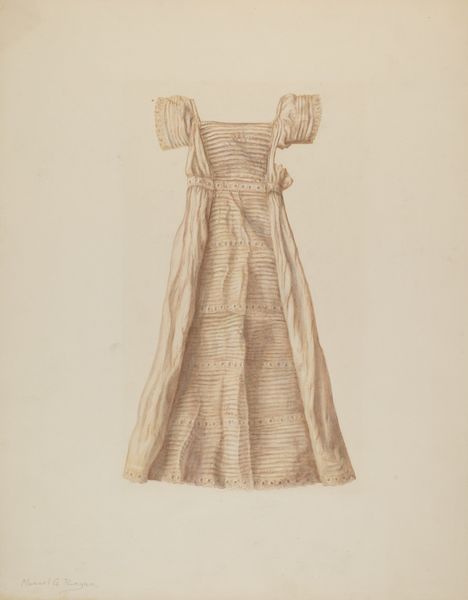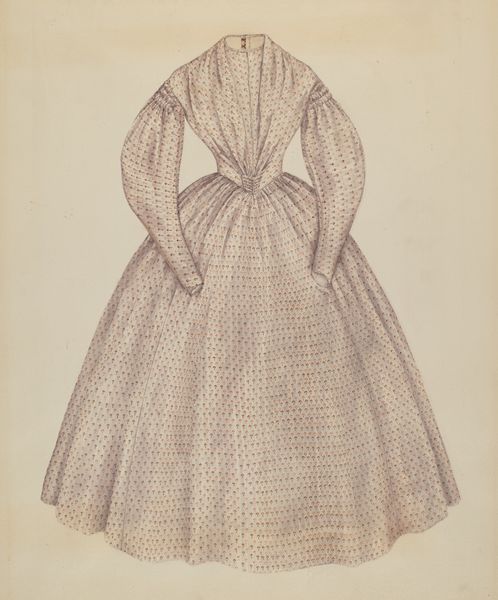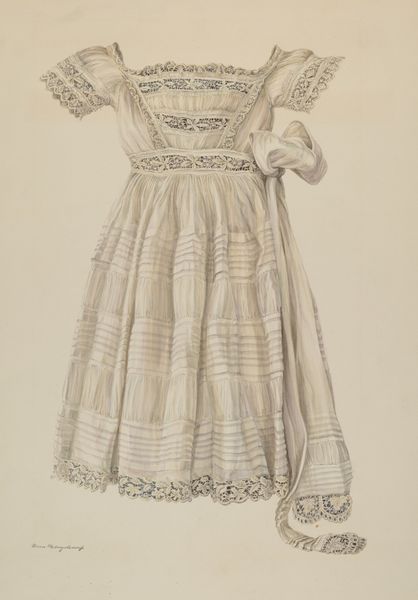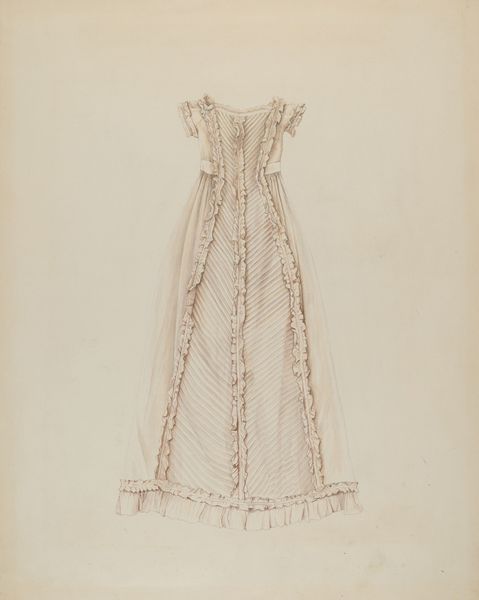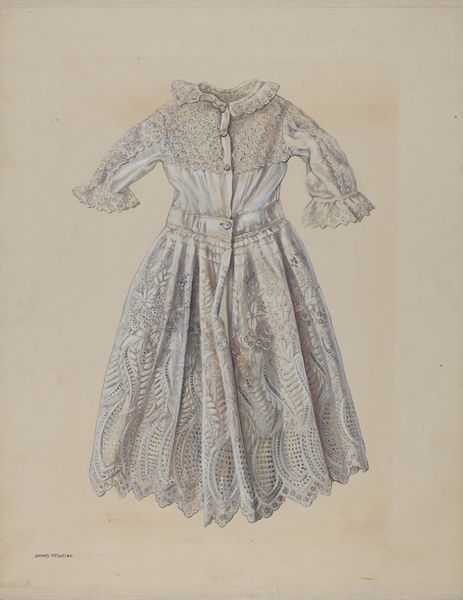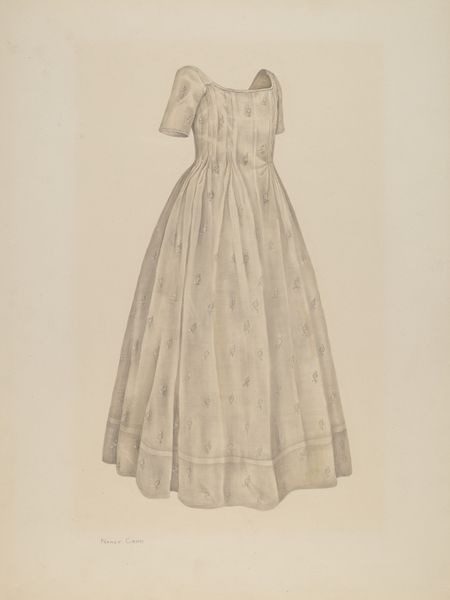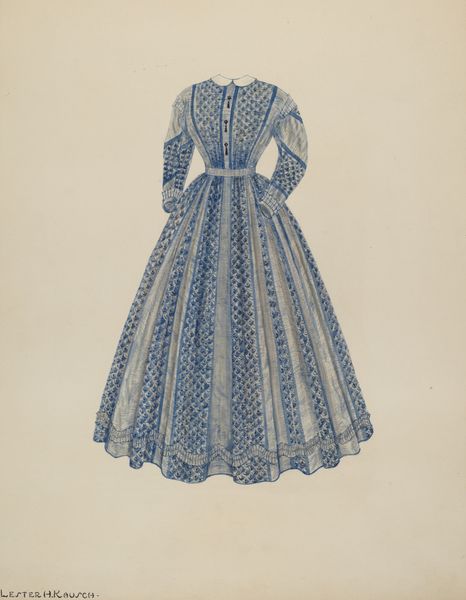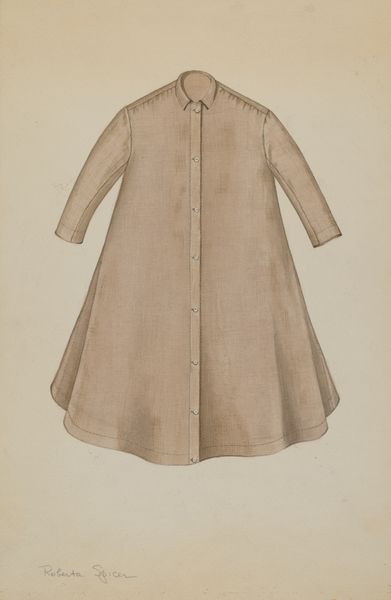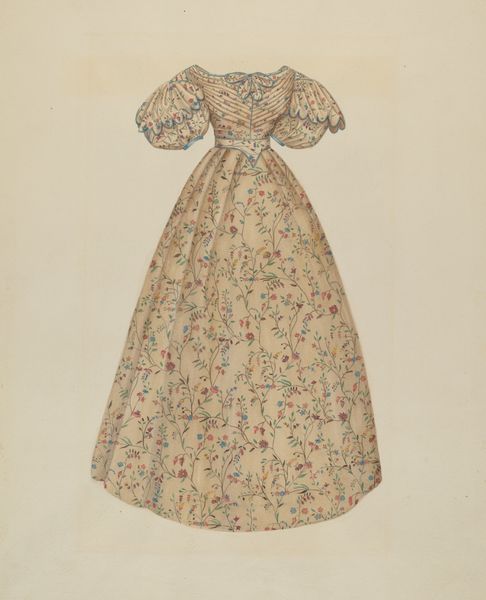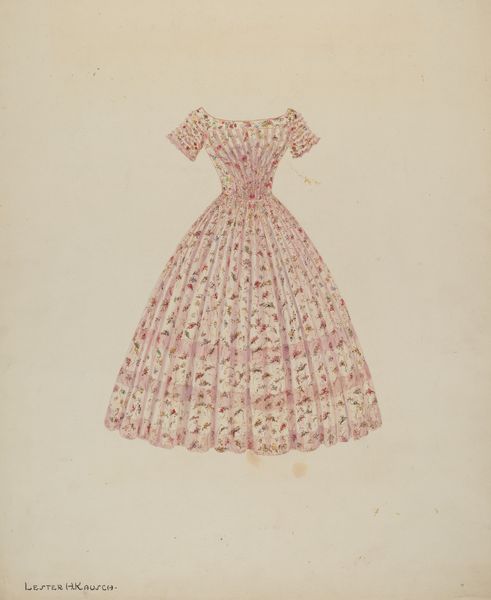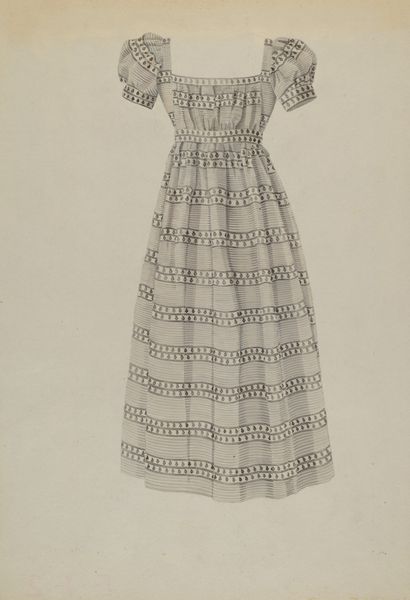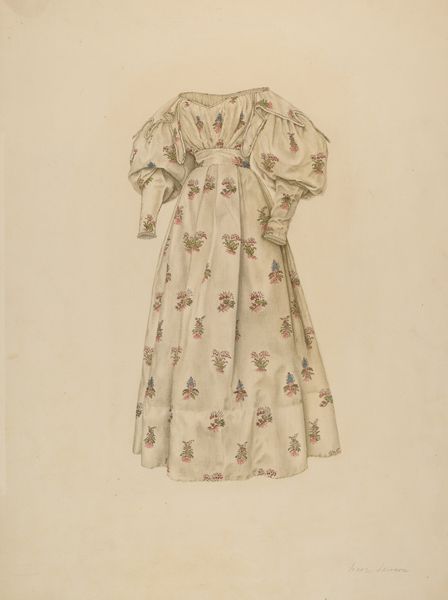
drawing, paper, pencil
#
pencil drawn
#
drawing
#
paper
#
pencil
Dimensions: overall: 37.9 x 31.3 cm (14 15/16 x 12 5/16 in.)
Copyright: National Gallery of Art: CC0 1.0
Editor: This is Fred Hassebrock's "Baby Dress," a pencil drawing on paper from around 1939. There’s a delicate quality to it. What story do you think this piece is trying to tell? Curator: A drawing like this offers a peek into the everyday lives of families in the late 1930s. The garment is rendered meticulously, and the fact that it’s documented speaks volumes. Editor: How so? Curator: Well, think about what was happening then – the Great Depression. Consumerism had a very different meaning. The act of carefully drawing a baby dress transforms it into more than just an object; it becomes a symbol of care, resourcefulness, and even hope amidst hardship. Do you see how the visual composition emphasizes its timelessness? Editor: Yes, the clean lines and simplicity really do make it feel somehow classic and familiar. I wonder if it reflects specific socio-economic circumstances of its time? Curator: Absolutely. In a way, this image serves as social commentary. It indirectly critiques the rapid consumer culture by highlighting the value of handmade goods, especially clothing. Perhaps it references an intimacy, and the value of children, in difficult circumstances. Editor: So the drawing elevates the dress beyond mere utility, transforming it into a record of values? Curator: Precisely. This simple pencil drawing actually acts as a lens through which we can examine societal priorities during a period of considerable upheaval. And that's precisely why studying the art through socio-cultural history offers valuable insights. Editor: I hadn't thought about it that way. Thanks, I’m definitely looking at it in a different light now!
Comments
No comments
Be the first to comment and join the conversation on the ultimate creative platform.
